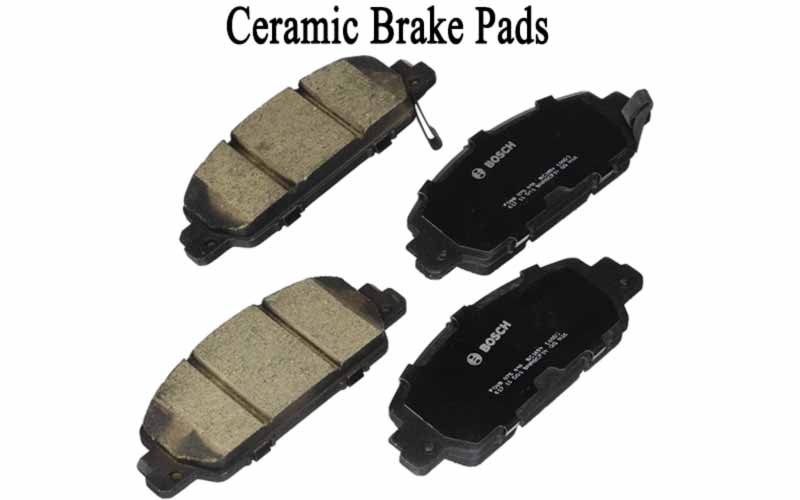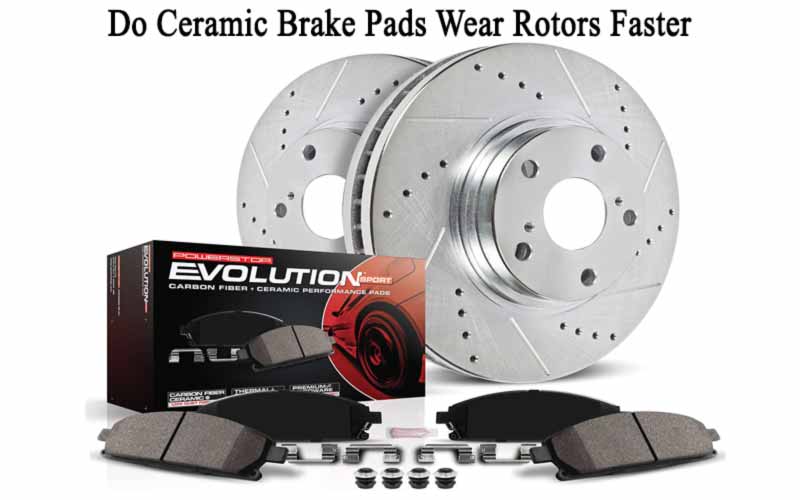Ceramic Vs Semi Metallic Brake Pads – All the Differences
There are four kinds of brakes pads—which are organic, ceramic, semi-metallic, and metallic—available in the market of the automobile. Amongst them, ceramic and semi-metallic pads are widely renowned for their qualities.
But if you want to buy a particular set of brake pads for your car, you will find it difficult to choose the best option for you. That is why you might want to know about ceramic vs semi-metallic brake pads.
Well, before knowing the major differences between ceramic and semi-metallic brake pads, you should know about the history and components of these two kinds of brake pads.
It will help you understand which one to choose while you are going to replace the brake pads of your vehicle.
Ceramic Brake Pads:
In the arena of the automobile, ceramic braking pads have a long track of history. It was, in fact, brought under the limelight in the 1980s. The main purpose of introducing this kind of brake pads was to replace organic brake pads.
It’s because organic brake pads had some kind of shortcomings back then. To clarify, ceramic braking pads were introduced to meet the shortcomings of organic brake pads.

Ceramic Brake Pads
Though ceramic braking pads were highly expensive than organic brake pads, they were successful to bring a revolution in the industry.
The main component of ceramic braking pads, however, are durable ceramic materials, which are notably dense. In addition, this kind of pads has a mixture of copper fibers in the components.
And the mixture of copper fibers and ceramic materials have made this type of brake pads stand out.
Ceramic braking pads generally work as a dual-pane window. They inhibit the heat generated from the rotor of your vehicle.
That is to say, this kind of brake pads has a tendency to keep the brake fluid cooler than any other brake pads available in the market.
And this characteristic of the pads ensures a great performance even though your brake pads undergo repeated hard stops.
Pros and Cons of Ceramic Brake Pads:
- ceramic braking pads produce quieter sound than that of semi-metallic braking pads
- Produce a kind of brake dust that is lighter-colored
- These braking pads last longer than semi-metallic braking pads
- These pads have substantial stability under high temperatures
- They are capable of producing less dust than semi-metallic braking pads
- Because of slotted and non-drilled brake rotors, ceramic braking pads can dissipate heat better than that of semi-metallic braking pads
- They are less abrasive than semi-metallic braking pads
- ceramic braking pads are the most expensive brake pads out there
- These kinds of braking pads are not ideal in highly cold climates
- In terms of absorbing heat, they are not as good as semi-metallic braking pads
- The stopping power of these braking pads are lighter than that of semi-metallic braking pads
- They have a tendency to wear more on the rotors brake
- They are not suitable for towing heavy-duty vehicles
Semi-Metallic Brake Pads:
Semi-metallic braking pads came to the world of the braking system just before the inception of ceramic braking pads. These pads were also brought under the limelight with a view to meeting the shortcomings of organic brake pads.
And after coming to the world of the braking system, semi-metallic braking pads were successful enough to win the hearts of car owners and mechanics.
These types of brake pads, however, are made from steel, copper, iron, and other significant materials.

Semi-Metallic Brake Pads
To give you an idea of a proper estimate, semi-metallic braking pads contain approximately 30% to 65% metal by weight. And the metals used for semi-metallic braking pads ensure you a long period of sustainability of the pads.
In general, semi-metallic braking pads are used in mid-range vehicles or bigger cars although they perform well small cars. The reason is that they can tackle hard braking than any other brake pads available in the market.
In terms of price, semi-metallic braking pads do not cost a big amount of money. The usual range of the price of these pads is somewhere in between organic and ceramic braking pads. But when it comes to quality, this kind of brake pads does not lag behind.
Pros and Cons of Semi-Metallic Brake Pads:
- Semi-metallic braking pads are less costly than ceramic braking pads
- They can perform in a satisfactory way in extremely cold climates
- These pads can absorb heat better than ceramic pads
- The stopping power of semi-metallic braking pads is greater than that of ceramic pads
- They do not wear brake rotors as high as ceramic pads
- In order to use for heavy-duty towing, semi-metallic braking pads are the best choice
- They are also great for daily street driving of lighter vehicles
- This kind of brake pads has low compressibility
- These type of brake pads has a tendency to produce more brake dust than ceramic pads
- In terms of sound, they produce a louder sound than that of ceramic braking pads
- The lifespan of these braking pads are shorter than that of ceramic pads
- These pads are the most abrasive brake pads available in the market
- In order to get the best performance, it will cost you careful and proper bedding-in
- They require you to replace the brake pads of your vehicle frequently–not as frequent as you might think
Do Ceramic Brake Pads Wear Rotors Faster?
You might be entangled with this question while going replace your brake pads. Interestingly, you have already got the answer in the Pros and Cons section of the article.

Do ceramic brake pads wear rotors faster
For your convenience, the answer to this question has been repeated in this section as well. Let’s learn about it:
Since ceramic braking pads are harder compounds, they put extra pressure on the rotors of your vehicle. As a consequence, this type of brake pads wears rotors. But it is a matter of hope that they will possibly never tear up the rotors of your vehicle.
In the end, it is crystal clear that both ceramic and semi-metallic brake pads have some pros and cons. So, the debate “Ceramic Vs Semi-Metallic Brake Pads” is merely unusual.
Besides, it is a tough job to differentiate which one is better for you. You should, however, go for a set of brake pads depending on your needs and expectations.

